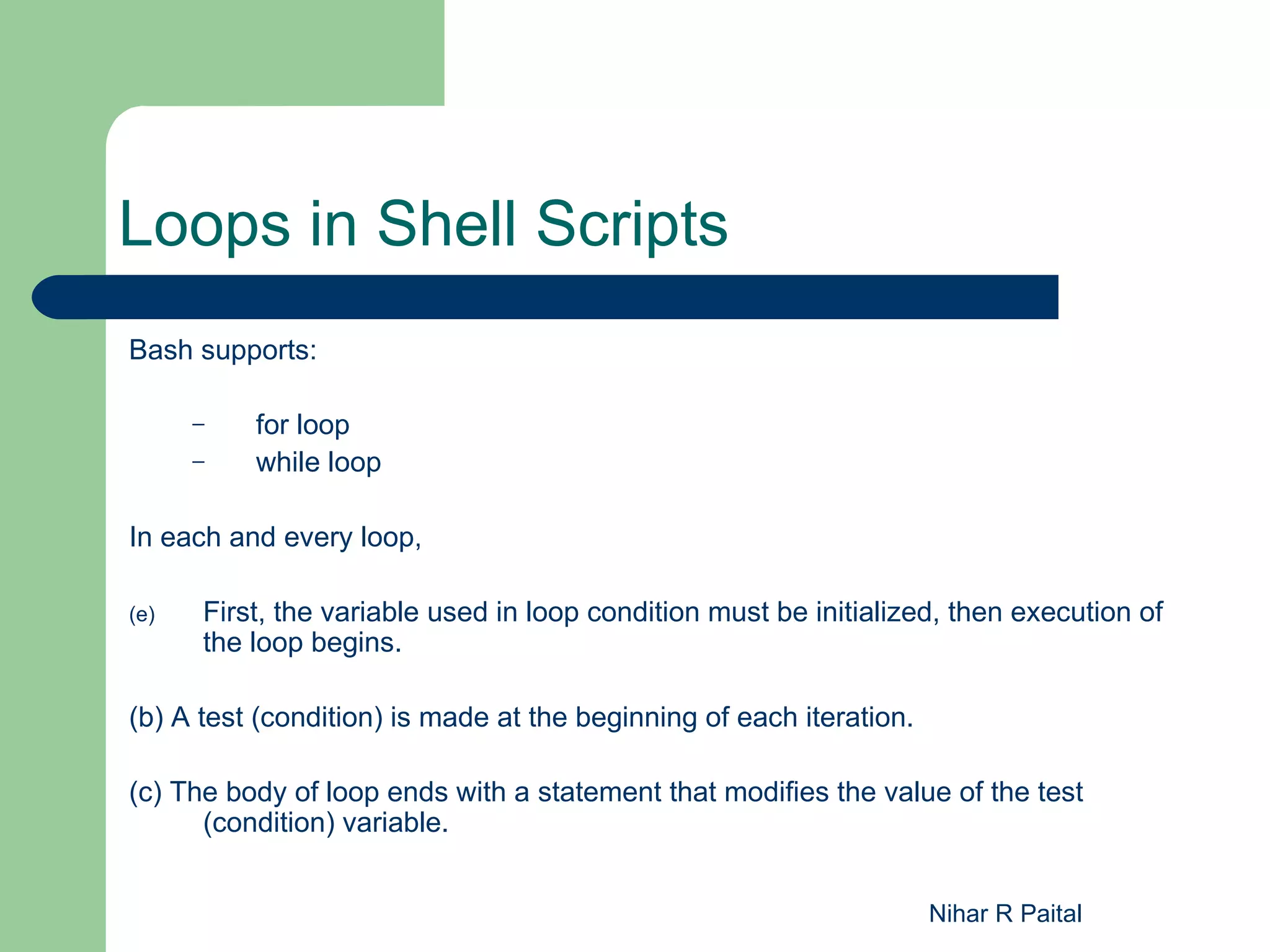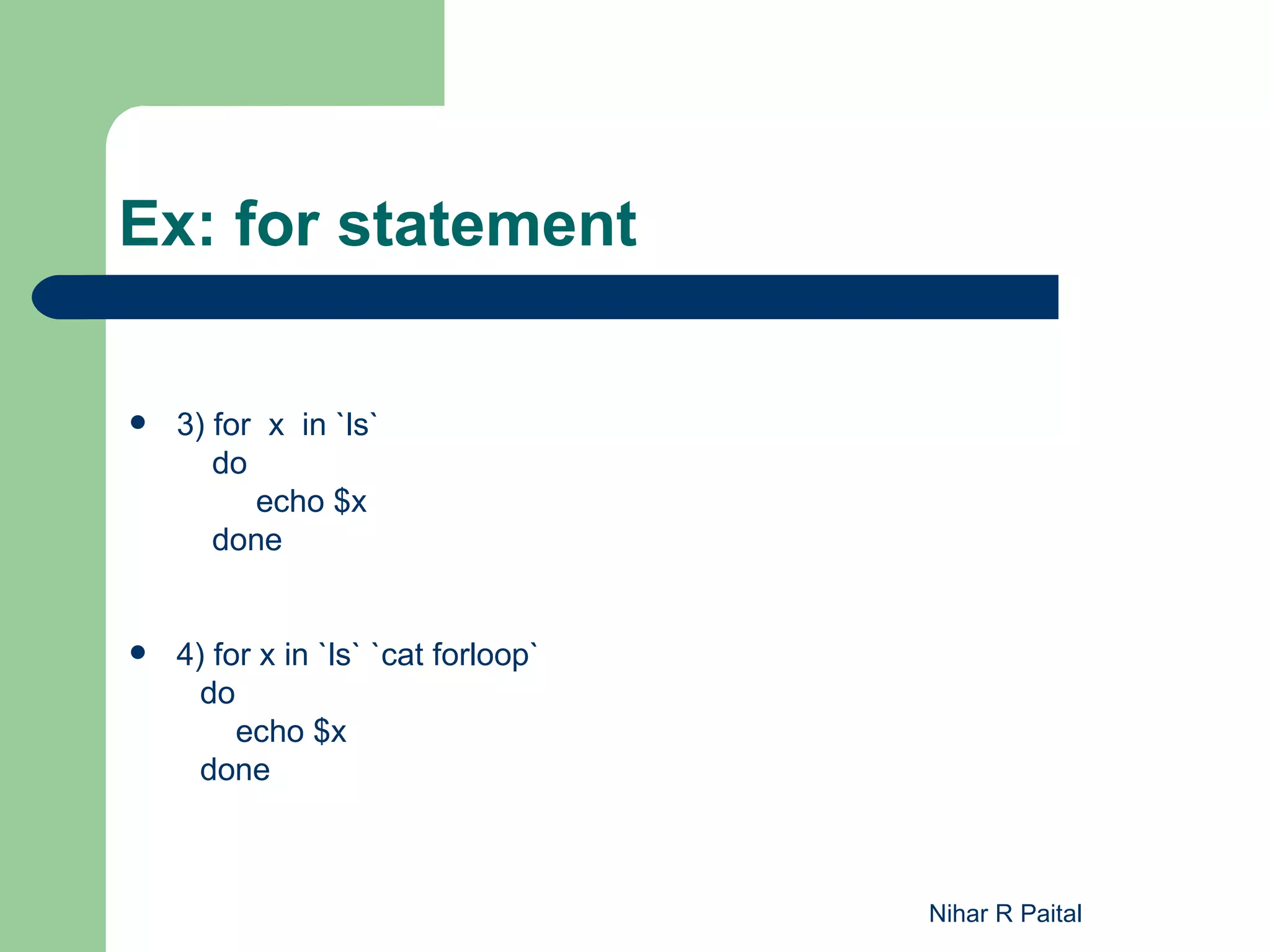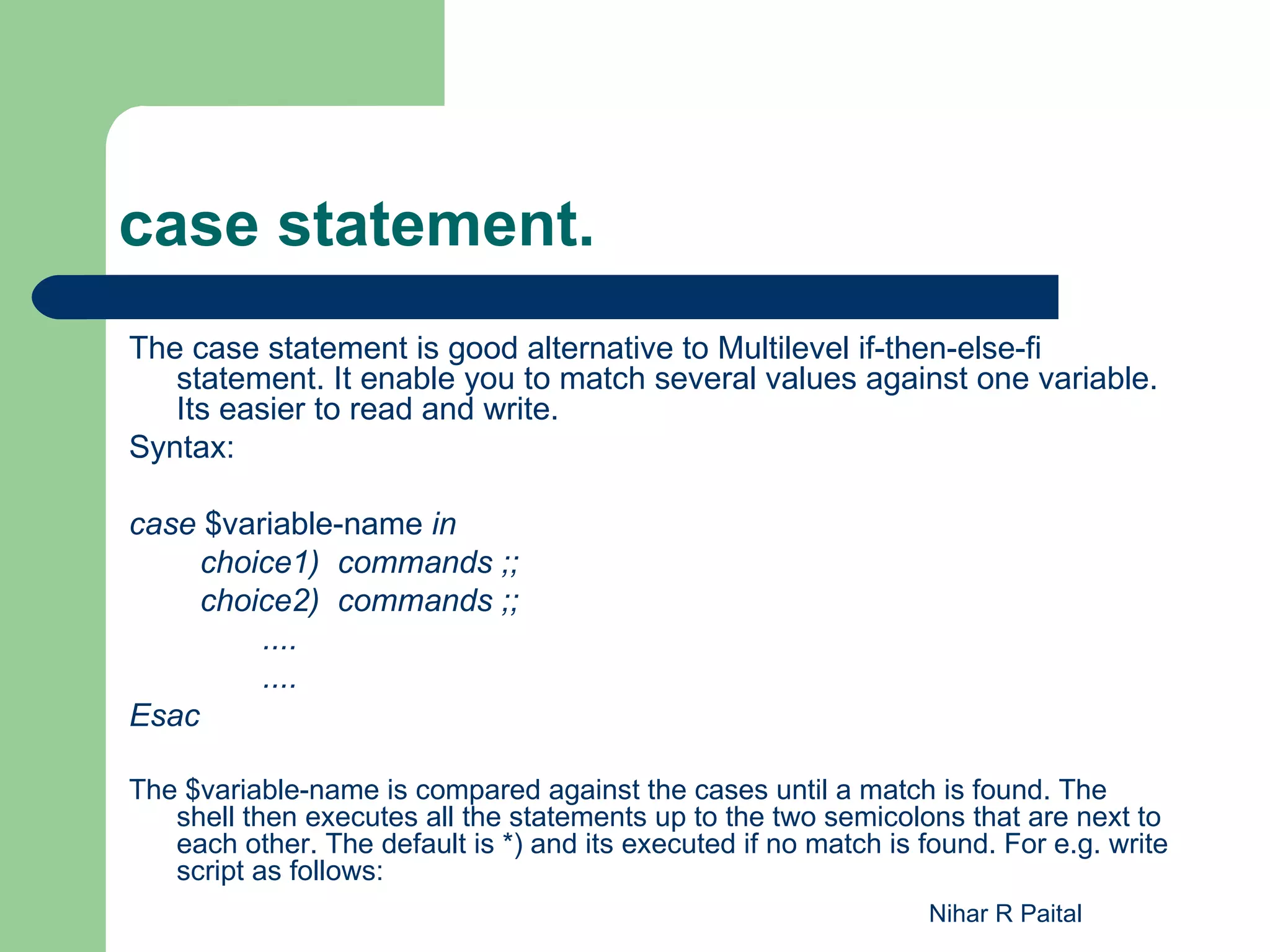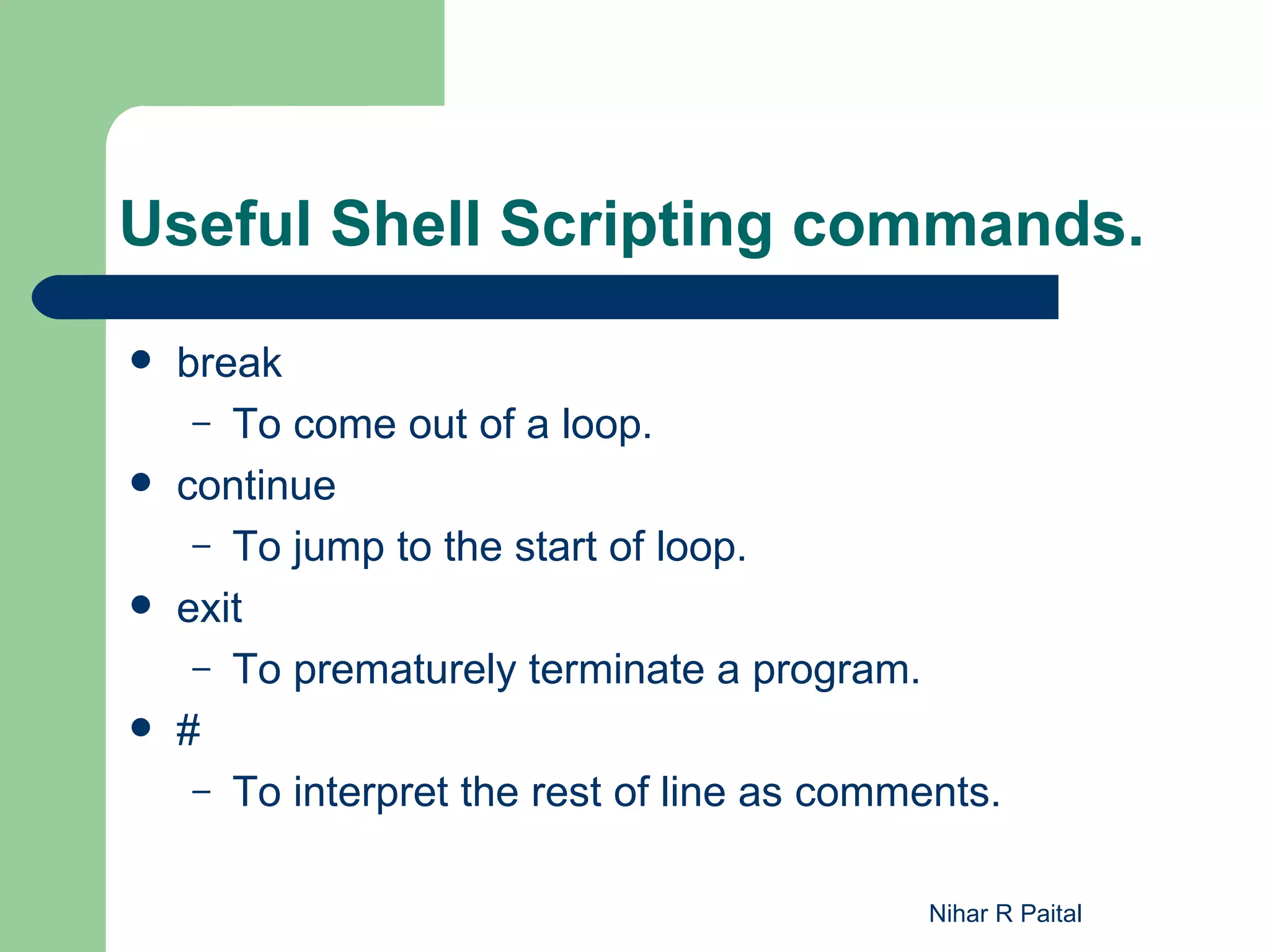The document provides an overview of Unix programming constructs, particularly focusing on nested if-else statements, loops, and case statements. It showcases various examples of these constructs in shell scripting, including their syntax and usage for different scenarios. Additionally, it highlights useful shell commands such as break, continue, and exit.

![Nested ifs You can write the entire if-else construct within either the body of the if statement of the body of an else statement. This is called the nesting of ifs. Ex : chos=0 echo "1. Unix (Sun Os)" echo "2. Linux (Red Hat)" echo -n "Select your os choice [1 or 2]? " read chos if [ $chos -eq 1 ] ; then echo "You Pick up Unix (Sun Os)" else if [ $chos -eq 2 ] ; then echo "You Pick up Linux (Red Hat)" else echo "What you don't like Unix/Linux OS." fi fi Nihar R Paital](https://image.slidesharecdn.com/class3programmingconstructs-120626111911-phpapp01/75/UNIX-Class3-Programming-Constructs-2-2048.jpg)
![Multilevel if-then-else #!/bin/ksh echo Enter a number : read n if [ $n -gt 0 ]; then echo "$n is positive" elif [ $n -lt 0 ] then echo "$n is negative" elif [ $n -eq 0 ] then echo "$n is zero" else echo "Opps! $n is not number, give number" fi Nihar R Paital](https://image.slidesharecdn.com/class3programmingconstructs-120626111911-phpapp01/75/UNIX-Class3-Programming-Constructs-3-2048.jpg)

![for Loop 1) for x in 10 20 30 40 50 do echo $x done 2) Ex: Arrays with for loop #!/bin/ksh y="shell scripting Training" for x in ${y[*]} do echo $x done Nihar R Paital](https://image.slidesharecdn.com/class3programmingconstructs-120626111911-phpapp01/75/UNIX-Class3-Programming-Constructs-5-2048.jpg)

![while loop Syntax: while [ condition ] do command1 command2 command3 .. .... done Nihar R Paital](https://image.slidesharecdn.com/class3programmingconstructs-120626111911-phpapp01/75/UNIX-Class3-Programming-Constructs-7-2048.jpg)
![Ex: while statement. x=1 while [ $x -lt 10 ] do echo $x x=`expr $x + 1` done Nihar R Paital](https://image.slidesharecdn.com/class3programmingconstructs-120626111911-phpapp01/75/UNIX-Class3-Programming-Constructs-8-2048.jpg)
![until statement Syntax: until control command do <commands> Done Ex: x=1 until [ $x -gt 10 ] do echo $x x=`expr $x + 1` done Nihar R Paital](https://image.slidesharecdn.com/class3programmingconstructs-120626111911-phpapp01/75/UNIX-Class3-Programming-Constructs-9-2048.jpg)



